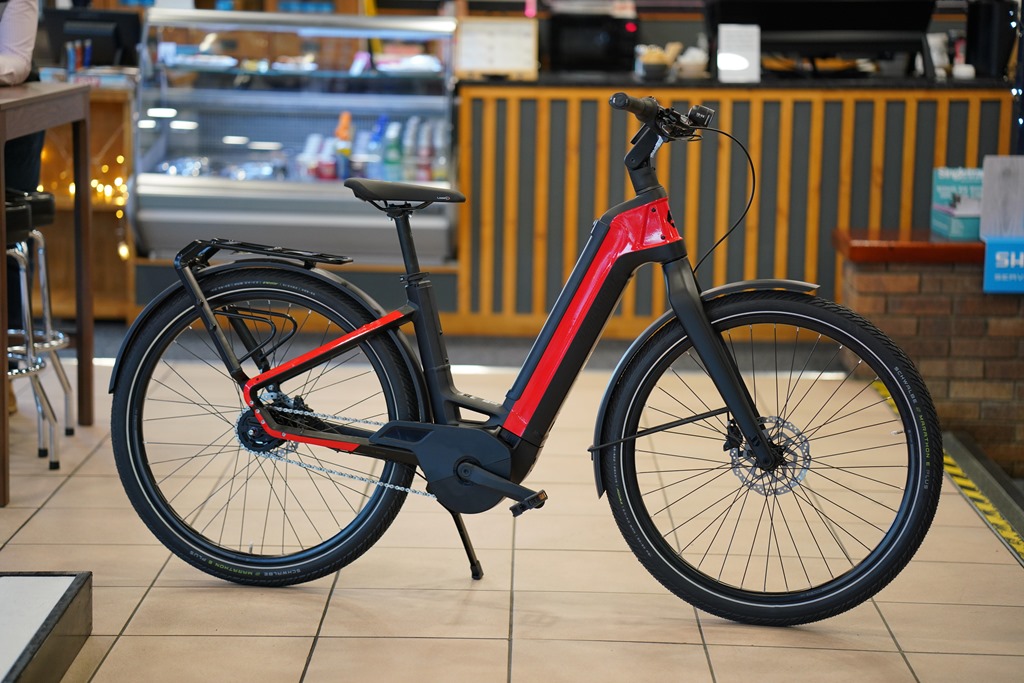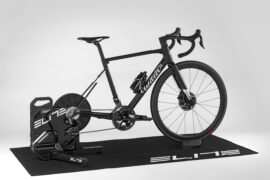Choosing a step through E-bike can seem a complicated process when faced with the minefield of options that manufacturers are now offering, be it motor output, battery size, frame style, the size of the frame itself – the list goes on. But fear not! This buying guide is here to help you make sense of all the latest and greatest features of a modern step-through electric bike in order to choose the right bike for you.
How do E-Bikes work?
The fist concept to understand Is the term “electric assist” which is referring to the way electric bikes operate. Not to be confused with the way electric scooters function that are run entirely from a twist and go throttle design, e-bikes supplement your pedaling rather than doing all of the work for you. The motor on any e-bike is regulated by law in the UK to produce up to 250W of power and cut out when the bike is travelling faster than 15.5mph. The rider can of course pedal beyond this speed but the motor will not assist beyond this point.
Modes
Electric bikes are equipped with several power settings to enable the rider to choose how much assistance they need the bike to provide. There are anywhere from 3 settings to 4 or 5 on some motors, but this is not something to become particularly concerned with so long s the modes are easy to switch between when riding. It doesn’t take much time to learn how the systems operate, and you quicky grasp how to change between modes according to how you are feeling or what the terrain is like. The controls for said modes will be located on either the handlebars or sometimes from a button on the frame.
Battery Size
The size of the battery is one of the first things to consider when looking at buying an electric bike. Not to be confused with the amount of assistance or torque from the motor, the battery is the component to the bike that powers the motor itself. The size of the battery is what equates to different range figures, for example a 400WH battery from the likes of Bosch or Yamaha won’t offer as much range as a bigger battery such as a 500WH or even bigger again. This is an important consideration as it could be the difference between a great ride or a long arduous push home!
To ascertain the right battery size for you, you must appreciate that there are a number of factors that can affect the range of the bike itself. The first thing the rider should do is think about how far they are looking to ride and the kind of terrain they are likely to ride over (hilly, rolling, flat etc.) Another thing to be aware of with any electric bike is that the weight of the rider and the effort that they are putting in can also play a massive part in how much range one rider gets compared to another. For example, a heavier individual might not get as much range as a lighter weight rider. This is because the motor itself will have to operate at a higher level to compensate for the difference between weight/effort etc..
Motor Options
As well as there being various battery sizes available, there are now several motor options to choose from. Be it a crank-based motor, or even a hub motor, there is now a machine to suit every riders needs. Again, it is important that the rider considers the type of riding they are looking to do and of course the terrain they are looking to ride.
Hub Motors:
These tend to be much lighter weight, resulting in the whole bike being lighter too. It is for this reason that hub motors are often found in E-road bikes and lighter weight hybrid bikes. The advantage of a lighter weight electric bike with a hub motor is that the weight is such that you can ride the bike with the motor turned off completely, however the motors themselves won’t offer as much assistance as a crank based motor from the likes of Bosch or Yamaha.
Crank-Motor
These motors are very popular on mountain bikes and hybrid bikes with bigger batteries than you would find on an electric bike with a hub motor. Crank motors are often coupled with much bigger batteries as they are more powerful and therefore require more energy to operate. As well as this, these motors also offer more assistance than hub motors hence why they are commonly seen on mountain bikes. If the rider is looking to ride up steeper terrain or they feel as though they need the most assistance possible, then a bike with a crank based motor is the bike they need.
Sizing
Please contact us at We Cycle about finding the right size bike for you. Size guides are a useful tool, but we like to gain a better understanding of you by taking into consideration your riding history and any goals you may have to ascertain the right size bike and any adjustments that might need making.
E-Bike Maintenance
It is a common misconception that e-bikes require more maintenance than normal bikes, when in reality they are just as durable as normal bikes and require servicing on the same basis. The intervals of these services depend on how often the bike is being used, however we recommend checking the health of the bikes chain, gearing, and brakes regularly as a matter of precaution.
Components found on electric bikes are normally e-bike specific and are therefore optimized for the extra power and stress that the motor puts them under. As a result of these stronger components, they should need replacing no sooner than a normal bike would need it’s components changing.
It is important to note that electric bike systems need to receive software updates occasionally in order to keep them running optimally. We include a software update in an e-bike service here at We Cycle to ensure that not only the mechanical aspects of your bike are running smoothly but the system itself is working as it should.





